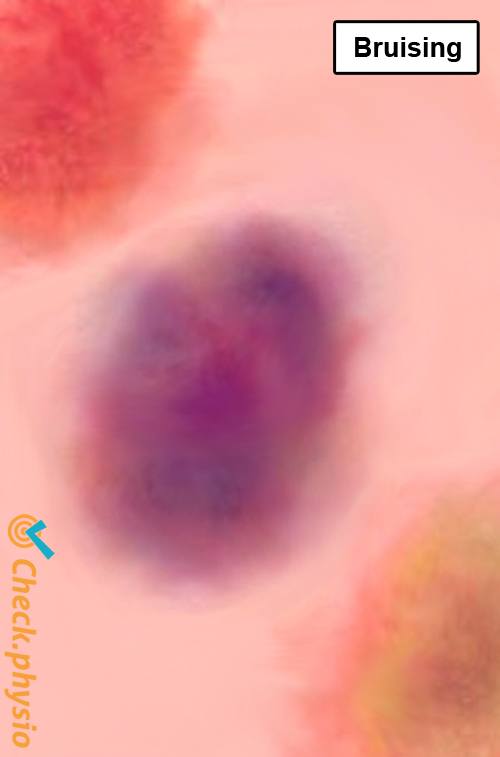- Conditions
- Bruising
Bruising Contusion
Introduction
A bruise is the result of a blunt force causing damage to the subcutaneous tissue. The result is a painful, swollen area that may turn blue. A bruise usually heals without intervention.

Description of condition
A fall or bump may cause damage to the subcutaneous capillaries. These are the very small blood vessels that penetrate deep inside the various tissues of the body. Damage causes blood to be released from the capillaries. This can be seen as swelling, blood under the skin or bruising.
Depending on the nature of the injury, the capillaries may be damaged at all levels. For example, the capillaries in the skin, the subcutaneous tissue, the muscles and the bone. The skin usually remains intact and there is no wound.
Cause and history
The symptoms are usually caused by a fall or bump. In theory, this can affect any part of the body (for example: arm, shoulder, elbow, wrist, hand, finger, leg, knee, ankle, foot, head or trunk).
Signs & symptoms
- Pain at a clearly defined location.
- The bruise is sensitive to touch.
- There is swelling, blood (hematoma) or a bruise.
- The bruise may undergo various color changes.
- Movements of the affected body part can be painful, because the damaged structures are stretched or experience pressure.
Diagnosis
Based on an interview and physical examination, the healthcare professional attempts to determine whether it is a bruise or if there is more to it. It is important to be certain that it is just a bruise and that there are no fractures present. Therefore, in case of doubt, it is advisable to have an X-ray taken.
Treatment and recovery
Application of cold compresses can limit the swelling and pain. A bruise generally does not require treatment. The symptoms usually disappear spontaneously within several days to weeks. A severe bruise may take up to 6 weeks to heal.
More info
You can check your symptoms using the online physiotherapy check or make an appointment with a physiotherapy practice in your locality.
References
Zaagman-van Buuren, M.J. & Jong, J.T.E. de (1997) Algemene ziekteleer Tweede, herziene druk. Houten/Diegen: Bohn Stafleu van Loghum.
